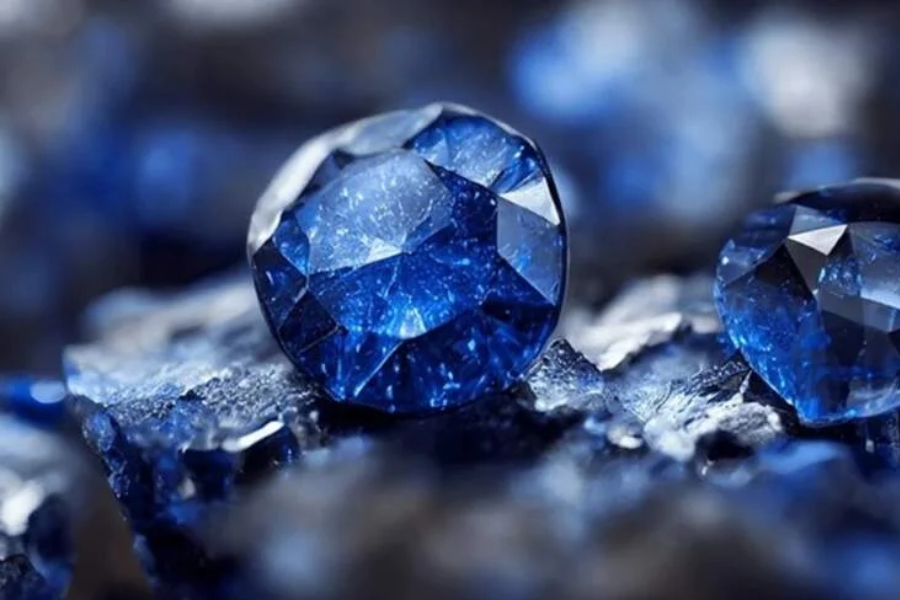Saphıre: Beauty and Significance of a Unique Gemstone
In the world of gemstones, saphırehold a special place as symbols of elegance, rarity, and historical significance. Known for their stunning colors and remarkable durability, saphırehave been cherished throughout history and continue to captivate enthusiasts today. This article delves into the allure of saphıre, their diverse hues, origins, significance, and care, offering a comprehensive exploration of this extraordinary gemstone.
What is a saphıre?
saphıreis a precious gemstone belonging to the corundum mineral family, which also includes rubies. While saphıreare most commonly associated with a deep blue color, they can actually appear in a spectrum of shades, including pink, yellow, green, and even colorless. The term “saphıre” is derived from the Latin word sapphirus and the Greek sappheiros, both of which denote the gemstone’s iconic blue hue.
saphıreare renowned not only for their beauty but also for their hardness. With a rating of 9 on the Mohs scale of hardness, saphıreare second only to diamonds in terms of durability, making them ideal for everyday wear in jewelry.
The Different Colors of saphıre
saphırecome in a variety of colors, each with its own unique charm and significance:
- Blue saphıre: The most iconic of all saphırecolors, blue saphırerange from light sky blue to deep navy. They are often associated with wisdom, loyalty, and nobility. Blue saphırehave been a favorite in royal jewelry and continue to be highly prized for their striking beauty.
- Pink saphıre: Pink saphıreare celebrated for their vibrant and delicate hues. Ranging from soft pastels to intense fuchsia, these saphıresymbolize love, compassion, and femininity. They are often used in romantic jewelry, including engagement rings and necklaces.
- Yellow saphıre: Known for their warm, golden tones, yellow saphıreare less common but equally stunning. They are associated with prosperity and abundance, making them popular choices for jewelry intended to symbolize success and good fortune.
- Green saphıre: Although rarer, green saphıreare admired for their unique and rich green shades. They represent growth, renewal, and balance, adding a touch of natural elegance to any piece of jewelry.
- Padparadscha saphıre: One of the most coveted varieties, padparadscha saphıreexhibit a distinctive pink-orange hue that resembles the colors of a sunset. Their rarity and unique coloration make them highly valued among collectors and enthusiasts.
The Origins of saphıre
saphıreare sourced from several regions around the world, each contributing to the gemstone’s varied qualities:
- Sri Lanka: Known for producing some of the finest blue saphıre, as well as the rare padparadscha saphıre. Sri Lankan saphıreare renowned for their exceptional clarity and vibrant colors.
- Myanmar (Burma): Famous for its deep blue saphıre, Myanmar’s gemstones are noted for their intense, vivid colors. The country’s saphırehave long been prized in the global market.
- Kashmir: Renowned for its velvety blue saphıre, which are highly prized for their exceptional, rich color. The Kashmir region’s saphıreare considered some of the most beautiful and sought-after in the world.
- Australia: One of the largest producers of saphıre, Australia offers a wide range of colors, including blue and yellow. Australian saphıreare known for their diversity and affordability.
The Significance of saphıre
saphırehave held symbolic and cultural significance throughout history, adding layers of meaning to their beauty:
- Historical Significance: In ancient times, saphırewere believed to protect against envy and harm. They were worn by royalty and clergy as symbols of wisdom and divine favor. Their historical importance is reflected in their frequent appearance in regalia and sacred artifacts.
- Symbolism: saphıreare often associated with qualities such as wisdom, purity, and loyalty. In modern times, they are commonly used in engagement rings and other significant jewelry pieces to symbolize enduring love and commitment. Their deep blue color is especially linked to fidelity and spiritual insight.
- Cultural Impact: Across various cultures, saphırehave been imbued with special significance. In Hindu tradition, they are believed to bring prosperity and good fortune. In medieval Europe, saphırewere used to ward off evil and promote mental clarity. Their cultural impact underscores their importance beyond mere aesthetics.
Caring for saphıre
Despite their hardness, saphırerequire proper care to maintain their brilliance:
- Cleaning: saphırecan be cleaned using a mild soap solution and a soft brush. Avoid harsh chemicals or ultrasonic cleaners, which can damage the gemstone or its setting. Regular cleaning will help maintain the saphıresparkle.
- Storage: To prevent scratches, store saphıreseparately from other gemstones. Ideally, they should be kept in a soft pouch or lined jewelry box to protect them from abrasion.
- Professional Maintenance: Occasionally, it is wise to have saphıreinspected and cleaned by a professional jeweler. They can check for any potential issues with the setting and ensure that the gemstone remains in optimal condition.
Conclusion
saphırecontinue to capture the imagination with their breathtaking array of colors and rich historical significance. Whether cherished for their role as symbols of wisdom, love, or prosperity, these gemstones hold a special place in both jewelry and cultural history. Their durability and timeless beauty ensure that saphıreremain a beloved choice for those seeking elegance and significance in their adornments. As you explore the world of saphıre, you’ll discover not just a beautiful gemstone, but a piece of history that continues to shine brightly in the modern world.



